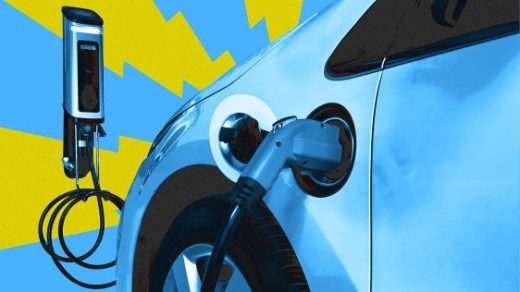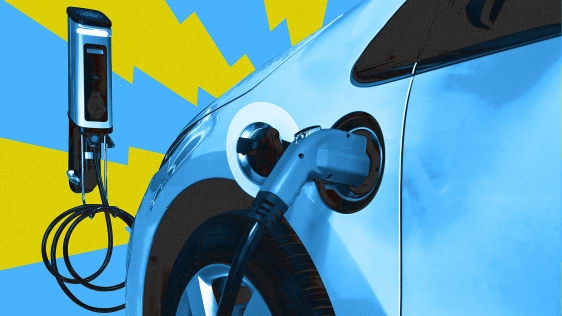Could electric cars be the solution that saves California’s power grid?
The move earned praise from green groups, but critics say that millions of new electric vehicles will further strain California’s power grid, which is already buckling under the stress of worsening heat waves. In a letter to Governor Newsom, outgoing EPA chief Andrew Wheeler asked how California can expect to service a massive fleet of EVs when it “can’t even keep the lights on today.”
In their response to Wheeler, California environmental officials said that electric cars “support a more reliable, resilient, and affordable grid. Indeed, electric transportation and increasingly cleaner electricity go hand-in-hand.”
On this point, experts agree. They say that EVs can charge up when demand is low, making use of surplus wind or solar power that might otherwise go unused, and they can unplug when demand peaks. In the future, EVs could even sell electricity back to the grid when needed, helping to prevent blackouts when the grid is overwhelmed, such as during a heat wave.
“There’s ample supply in California to charge lots of electric vehicles,” said Camron Gorguinpour, director of mobility solutions at ENGIE Impact, a clean-energy consulting firm. The challenge, he said, is making sure EVs charge at the right time.
Today’s more sophisticated EV chargers can fuel cars when power is most abundant and prices are lowest. Drivers can set their cars to juice up overnight, for instance, after most people have gone to bed and the grid is flush with cheap power. This helps make sure that EVs don’t overload the grid when demand surges, usually in the late afternoon or early evening. Some chargers allow drivers to fuel up only when power falls below a specified price.
“You would want to plan to have your electric vehicles charging overnight or in the early hours of the morning when air-conditioning isn’t peaking on the system,” said Samantha Houston, a vehicles analyst at the Union of Concerned Scientists.
In the future, EVs will have a two-way relationship with the grid. Some EVs are already able to provide electricity. In Japan, the Nissan LEAF can supply backup electricity in an emergency—enough to power a home for two to four days. Someday, EVs will be able to sell electricity to the grid.
“This isn’t magic technology that doesn’t exist,” Gorguinpour said. “Virtually every automaker is doing something on what we call ‘offboardable power.’”
Federal regulators recently cleared the way for drivers to sell power to the electric grid, though hurdles remain. EV manufacturers will need to update vehicle warranties to allow for this use, Houston said. Tesla’s warranty currently doesn’t cover damage from “using the vehicle as a stationary power source.” Grid operators will also need to install safety controls to prevent EVs from overloading the grid, Gorguinpour said.
Conceivably, EVs could help supply needed power during heat waves, Houston said. EVs could also come to the rescue during wildfire season, when grid operators shut off electricity in wooded areas to prevent power lines from sparking fires. Homeowners could use their EVs as a backup power source.
California Independent System Operator CEO Steve Berberich told reporters that in order to prevent blackouts during future heat waves, the state needs to build out more clean power and batteries. The California Energy Commission is now updating its Vehicle-Grid Integration Roadmap with that in mind.
The International Renewable Energy Agency projects there will be 160 million EVs on roads around the world by 2030. Those EVs can work with renewables, charging up on surplus solar power during the day and surplus wind power at night. By buying electricity that would otherwise go unused, EVs will make wind and solar plants more valuable, Gorguinpour said.
The Parker Project, an EV pilot program in Denmark, is exploring how plug-in cars can support renewables. As part of its work, it’s developing a certificate that automakers can apply to cars that cooperate with the power grid, an important step in shifting to clean energy. Grid-smart EVs have the potential to make our power supply cleaner, more reliable, and more resilient.
“We just need all vehicles doing something,” Houston said. “They don’t have to do it all the time, but we need every vehicle doing something beneficial.”
Jeremy Deaton writes for Nexus Media, a nonprofit climate change news service. You can follow him @deaton_jeremy.
(19)



